Accessible Events – A Multi-dimensional Approach to Temporary Universal Design
Presenter: Tina Merk, Engineering Affairs Office, Zayed Higher Organization for People of Determination
The presentation focuses on four key areas of consideration when planning a temporary event which is accessible to everyone, regardless of disability diagnoses or classification. Central to the accessibility of any event is the venue of the event itself, representing the first area of consideration. Technical support, alongside “the human factor” account for the second and third areas of consideration, regarding accessible events, while accessible ensures accessibility of information, particularly leading up to an event. Each of the four key areas of consideration are outlined and analysed in detail, as well as their symbiotic relationship to one another. Their significance, when it comes to the success of an event in relation to universal design concepts, cannot be undervalued.
The event venue is indeed a comprehensive consideration, encompassing transportation to and within the venue, event access, onsite facilities and accommodation. Technical support focuses on assistive technology and other technology-based supports, which remains and ever-expanding topic, as advances in technology are evolving at an exceedingly rapid pace. In spite of these technological advances, humans remain at the very core of accessibility practices, meaning that training and awareness in the provision of accessible services must be provided to both event staff and management. As mentioned previously, accessibility of event details (ticket purchasing, event information etc.) is another key consideration when planning an accessible event, though accessible marketing is an element of event planning which is often overlooked, or considered as an “inconvenience” rather than a necessity.
The Special Olympics World Games, 2019 in Abu Dhabi and the upcoming Expo 2020 in Dubai are included as case-studies to illustrate the importance of integrating universal design in a multidimensional capacity as part of the pre-planning phase of every event.
